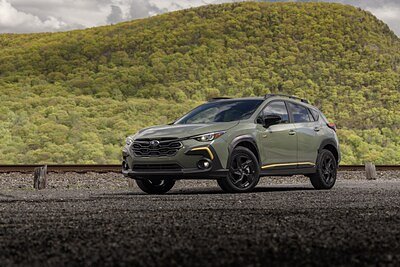
Subaru Navigates Headwinds: Crosstrek Strength Offsets Broader Sales Decline
Despite industry-wide challenges, Subaru leans on Crosstrek’s popularity and a strategic shift in production to bolster its position in a tightening market. Analysis of sales data and future outlook.
Subaru Navigates Headwinds: Crosstrek Strength Offsets Broader Sales Decline
Camden, NJ – November 3, 2025 – Subaru of America reported October sales figures revealing a 6.5% year-over-year decline, mirroring a broader downturn impacting the automotive industry. However, beneath the headline numbers, a story of strategic adaptation is unfolding. The automaker’s popular Crosstrek model continues to defy market trends, achieving its best October ever with a 2.2% sales increase, while a significant shift in production – moving Forester assembly to Subaru of Indiana Automotive (SIA) – signals a long-term commitment to domestic manufacturing and supply chain resilience.
October saw Subaru deliver 51,036 vehicles, compared to 54,552 in the same period last year. Year-to-date figures also reflect a contraction, with 534,073 units sold – down 2.6% – against 548,164 in 2024. These figures place Subaru slightly below the overall industry decline of 5.8% reported by the Automotive News Data Center, suggesting specific challenges beyond the broader macroeconomic headwinds.
Crossover Momentum Amidst Industry Headwinds
The standout performer remains the Crosstrek, with 16,284 units sold in October. This success isn't accidental. Consumer Reports data shows a 92% recommendation rate for the vehicle, citing its fuel efficiency, standard safety features, and surprisingly capable off-road performance – attributes highly valued in the current market. “The Crosstrek is really hitting the sweet spot for consumers who want versatility and reliability without breaking the bank,” said an industry analyst, speaking on background. “It's effectively catering to the continued shift toward crossovers and SUVs.”
This crossover momentum, however, wasn’t enough to offset declines in other segments. Outback sales remained relatively stable at 13,441, while other models experienced more significant dips. The overall decline aligns with a cooling market affected by rising interest rates and lingering supply chain disruptions.
Reshoring Production: A Strategic Gamble
A key element of Subaru’s long-term strategy is the shift of Forester production from Japan to SIA in Lafayette, Indiana. This move, announced earlier this year, represents a substantial investment in domestic manufacturing and a commitment to strengthening supply chain resilience. “Bringing Forester production to Indiana isn’t just about reducing costs; it's about de-risking our supply chain and ensuring we can respond more quickly to changing market demands,” explained a Subaru spokesperson.
The decision comes amidst growing calls for reshoring manufacturing and reducing reliance on overseas production. The move is expected to create jobs in Indiana and boost the local economy. However, it also involves significant logistical challenges, including retraining the workforce and adapting the SIA facility to accommodate a new model. “It's a complex undertaking, but one we believe is essential for our long-term success,” stated the spokesperson.
Navigating a Tightening Market
The automotive market remains highly competitive, with manufacturers battling for market share amidst constrained supply and evolving consumer preferences. The rise of electric vehicles (EVs) presents a further challenge, forcing automakers to invest heavily in new technologies and adapt their product portfolios. While Subaru has begun to introduce hybrid and electric models, it remains heavily reliant on internal combustion engine (ICE) vehicles.
“Subaru is navigating a tricky situation,” said a supply chain expert. “They have a loyal customer base and a reputation for quality and reliability, but they need to accelerate their EV strategy to remain competitive in the long run.”
The company’s focus on core strengths – all-wheel drive, safety, and reliability – appears to be a calculated strategy. “They’re doubling down on what they do best, while also cautiously exploring the EV space,” observed the industry analyst. “It’s a pragmatic approach in a rapidly changing market.”
Looking Ahead
Subaru’s October sales results paint a complex picture. While the overall decline is concerning, the success of the Crosstrek and the strategic shift in production offer glimmers of hope. The company faces significant challenges in a tightening market, but its commitment to quality, safety, and domestic manufacturing positions it to navigate the headwinds and remain a competitive player in the automotive industry. The next few months will be crucial as Subaru seeks to build on its strengths, accelerate its EV strategy, and capitalize on the growing demand for versatile and reliable vehicles. The company is banking on the Crosstrek’s continued success and the long-term benefits of reshoring production to drive future growth and solidify its position in a rapidly evolving market.
